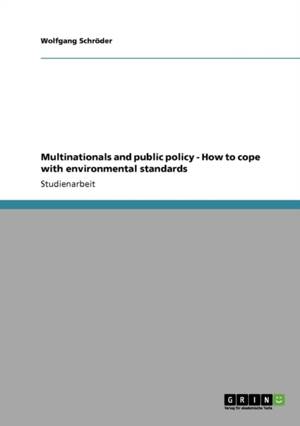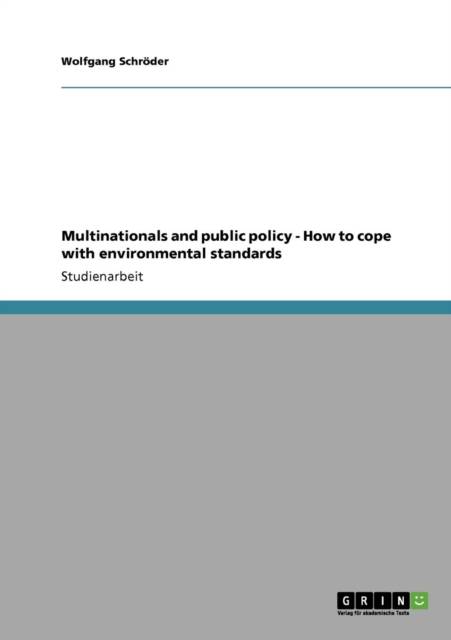
- Afhalen na 1 uur in een winkel met voorraad
- Gratis thuislevering in België vanaf € 30
- Ruim aanbod met 7 miljoen producten
- Afhalen na 1 uur in een winkel met voorraad
- Gratis thuislevering in België vanaf € 30
- Ruim aanbod met 7 miljoen producten
Multinationals and public policy - How to cope with environmental standards
Wolfgang Schröder
Paperback | Duits
€ 15,45
+ 30 punten
Omschrijving
Studienarbeit aus dem Jahr 2005 im Fachbereich BWL - Wirtschaftspolitik, Note: 3,0, Westfälische Wilhelms-Universität Münster (Lehrstuhl für BWL, insbesondere internationale Wirtschaft), Veranstaltung: International Business Research Seminar Summer 2005: Determinants of Investment Location and Modes of Entry, Sprache: Deutsch, Abstract: This paper is aimed to shed light on the different attempts of multinational enterprises (MNEs) to cope with environmental regulations which therefore develop strategies. In addition, it is focused on the driving forces and levels of international and country-specific environmental policies. The roots of environmental policy are pointed out. In this context, the different levels of environmental regulations are identified therewith deducing implications for the compliance-behaviour of firms. This paper also explicates the environmental implications of different economic theories. It is exemplified how different stakeholders might influence the strategic orientation of enterprises towards environmental performance and the various environmental strategies on firm-level are explicated. It is especially focused on different approaches being developed in order to test the empirical evidence predictions of the "pollution haven hypothesis". Therefore four studies are reviewed and commented on.
Specificaties
Betrokkenen
- Auteur(s):
- Uitgeverij:
Inhoud
- Aantal bladzijden:
- 32
- Taal:
- Duits
Eigenschappen
- Productcode (EAN):
- 9783640206285
- Verschijningsdatum:
- 11/11/2008
- Uitvoering:
- Paperback
- Formaat:
- Trade paperback (VS)
- Afmetingen:
- 148 mm x 210 mm
- Gewicht:
- 54 g

Alleen bij Standaard Boekhandel
+ 30 punten op je klantenkaart van Standaard Boekhandel
Beoordelingen
We publiceren alleen reviews die voldoen aan de voorwaarden voor reviews. Bekijk onze voorwaarden voor reviews.










